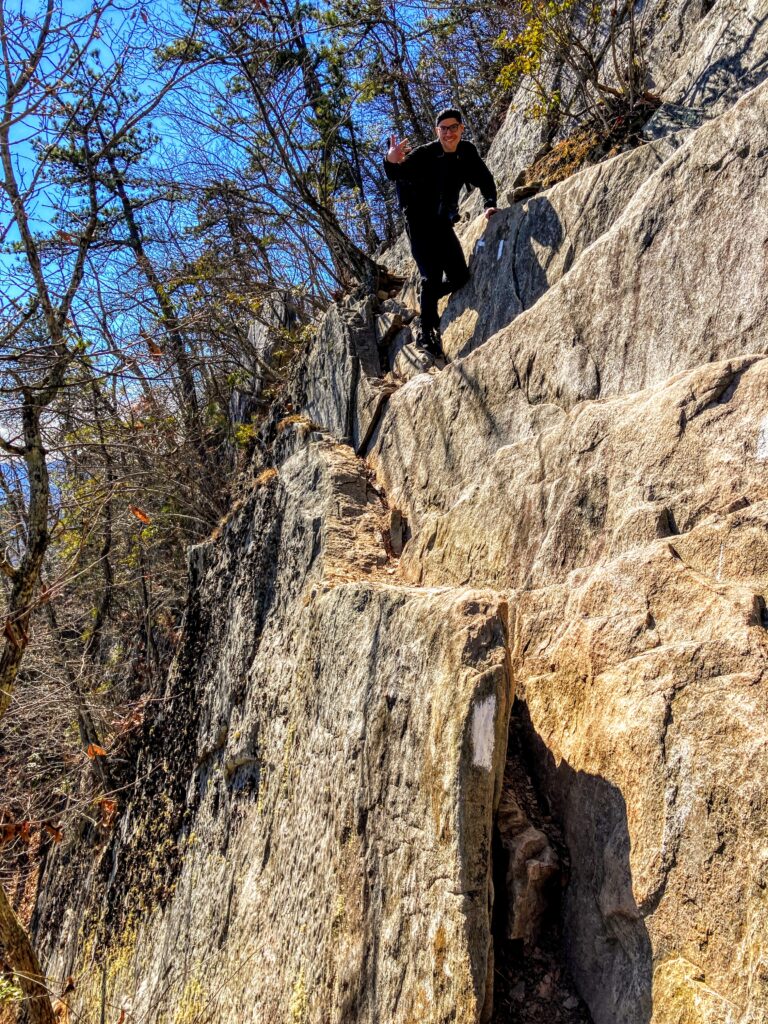🔥 Best MTB GEAR DEALS ON AMAZON
Brake fluid is a critical component when it comes to maintaining and ensuring optimal performance of your mountain bike’s braking system. Over time, brake fluid can become contaminated or depleted, leading to decreased braking power and potential safety hazards. In this guide, we will walk you through the step-by-step process of adding brake fluid to your mountain bike, ensuring your brakes function at their best.
Importance of Brake Fluid
Before diving into the process, let’s understand why brake fluid is crucial for your mountain bike’s braking system. Brake fluid is responsible for transmitting the force from your brake lever to the brake caliper, enabling efficient braking power. It also plays a vital role in preventing corrosion and maintaining the overall health of the braking system.
Brake fluid acts as a hydraulic medium to transfer the force applied to the brake lever to the brake caliper. When you squeeze the brake lever, the force is transmitted through the brake lines, and the brake fluid amplifies it, resulting in the clamping force that slows down or stops the bike. Without an adequate amount of brake fluid, your brakes will not be able to generate the necessary force to stop your bike effectively.
Additionally, brake fluid acts as a lubricant for various components within the braking system, preventing friction and wear. It also contains additives that inhibit corrosion, ensuring the longevity and reliability of your brakes. Regularly checking and replenishing brake fluid is essential to maintain optimal braking performance and to prevent potential safety issues on the trail.
Types of Brake Fluid
There are two common types of brake fluid used in mountain bike systems: DOT fluid and mineral oil. Each has its own advantages and compatibility, so it’s essential to use the appropriate type specified by the manufacturer of your mountain bike’s braking system.
DOT Fluid
DOT fluid, such as DOT 3, DOT 4, or DOT 5.1, is commonly used in hydraulic brake systems. It is hygroscopic, meaning it absorbs moisture from the air over time. DOT fluid has a higher boiling point compared to mineral oil, making it suitable for demanding riding conditions and high temperatures.
The hygroscopic nature of DOT fluid allows it to absorb moisture, which helps prevent the formation of air bubbles within the brake system. Air bubbles can compromise the performance of your brakes by reducing the transfer of force from the brake lever to the caliper. DOT fluid’s higher boiling point ensures that it remains stable and effective even under extreme heat generated during prolonged braking or steep descents, where the brakes can reach high temperatures. This makes DOT fluid a suitable choice for riders who frequently tackle challenging terrains or engage in aggressive riding styles.
Mineral Oil
Mineral oil, on the other hand, is typically used in brake systems manufactured by companies like Shimano and Magura. It is not hygroscopic, making it less prone to moisture absorption. Mineral oil has a lower boiling point compared to DOT fluid but provides excellent heat dissipation and consistent performance.
Mineral oil does not absorb moisture, which means it maintains its performance characteristics more consistently over time. It is less affected by temperature changes and does not require regular replacement due to moisture contamination. The lower boiling point of mineral oil may make it less suitable for extreme riding conditions or extended periods of heavy braking, but it still offers reliable and consistent braking performance for most mountain biking scenarios.
When selecting brake fluid, always refer to the manufacturer’s recommendations to ensure compatibility and optimal performance for your specific brake system.
Tools and Materials Needed
Before you start adding brake fluid to your mountain bike, gather the necessary tools and materials:
- Appropriate brake fluid (DOT fluid or mineral oil): Ensure you have the correct type of brake fluid recommended by your bike’s manufacturer.
- Clean rag or towel: Use this to wipe and clean various parts of the brake system.
- Isopropyl alcohol (for cleaning): This will help remove any dirt or contaminants from the reservoir area.
- A small container or tray: Use this to catch any spilled brake fluid during the process.
- Syringe or bleeding kit (optional, depending on the brake system): These tools may be necessary for bleeding the brake system if required.
- T10 or T25 Torx wrench (for brake lever reservoir cap removal, if applicable): Check the type of wrench needed to remove the reservoir cap and ensure you have it on hand.
- Plastic gloves (to protect your hands): Wear gloves to prevent direct contact with the brake fluid, as it may be harmful to the skin.
Ensuring you have all the necessary tools and materials beforehand will make the process smoother and more efficient.
Step-by-Step Guide to Adding Brake Fluid
Now let’s go through the process of adding brake fluid to your mountain bike:
Step 1: Prepare Your Work Area
Start by finding a clean, well-ventilated area to work on your mountain bike. Having a clutter-free workspace ensures that small components or tools won’t be misplaced during the process. It is also important to have good ventilation to prevent the inhalation of any fumes that may be emitted during the process.
Step 2: Remove the Brake Lever Reservoir Cap
If your mountain bike’s brake system has a brake lever reservoir cap, use the appropriate Torx wrench (T10 or T25) to remove it. This step allows easy access to the brake fluid reservoir. Be careful not to damage the cap or the surrounding area when removing it.
Step 3: Clean the Reservoir Area
Using a clean rag or towel, wipe around the brake fluid reservoir area to remove any dirt or debris. Ensure that no contaminants enter the reservoir when you open it. Cleanliness is important to prevent any impurities from entering the brake system, which could affect its performance.
Step 4: Check the Brake Fluid Level
Look inside the reservoir to check the current brake fluid level. The fluid should be between the minimum and maximum markings. If the level is below the minimum marking, it’s time to add more fluid. Ensure that you use the correct type of brake fluid as recommended by the manufacturer.
Step 5: Top Up with Brake Fluid
Open the brake fluid container and carefully pour the fluid into the reservoir, ensuring not to spill or overfill it. Take your time and be cautious during this step to avoid any mess or contact of brake fluid with your bike’s paintwork. Pour the fluid slowly to prevent air bubbles from forming. It is important to use a steady hand and avoid introducing any contaminants into the reservoir.
Step 6: Bleeding the System (if necessary)
If you notice air bubbles or contamination in your brake fluid, it might be necessary to bleed the brake system. This process ensures optimal brake performance by removing any air trapped in the system. Bleeding may require specific tools like a syringe or bleeding kit, and it’s recommended to follow the manufacturer’s instructions to perform it correctly. Bleeding the brake system can improve brake responsiveness and eliminate any sponginess in the brake lever.
Step 7: Reservoir Cap Replacement
Once you have added the brake fluid and, if necessary, bled the system, securely replace the brake lever reservoir cap. Ensure it is tightened properly to prevent any fluid leakage during your rides. It is important to tighten the cap securely but avoid overtightening, as it may damage the threads or the cap itself.
Step 8: Clean Up and Final Checks
Clean any spilled brake fluid using isopropyl alcohol and a clean rag. Double-check that the reservoir cap is tightly secured and that there are no signs of leakage. Inspect the brake system for any abnormalities before testing it out on the trail. It is crucial to ensure that there are no loose components or leaks that could compromise the braking performance and safety of your mountain bike.
Conclusion
Adding brake fluid to your mountain bike is a relatively simple process that can greatly enhance your bike’s braking performance and overall safety. Remember to use the correct type of brake fluid as specified by your bike’s manufacturer, follow the steps carefully, and take your time to ensure proper and mess-free fluid replenishment. By maintaining your bike’s brake system, you can enjoy a smoother and more controlled riding experience on your mountain adventures.
Note: This article has been written by an AI language model to provide general information on adding brake fluid to a mountain bike. Always refer to the specific instructions provided by your bike’s manufacturer and consult a professional if you are unsure about any aspect of the process.
FAQ
1. Why is brake fluid important for a mountain bike’s braking system?
Brake fluid is responsible for transmitting the force from the brake lever to the brake caliper, enabling efficient braking power. It also plays a vital role in preventing corrosion and maintaining the overall health of the braking system.
2. What are the two common types of brake fluid used in mountain bike systems?
The two common types of brake fluid used in mountain bike systems are DOT fluid and mineral oil. DOT fluid is commonly used in hydraulic brake systems, while mineral oil is typically used in brake systems manufactured by companies like Shimano and Magura.
3. What are the advantages of DOT fluid?
DOT fluid has a higher boiling point compared to mineral oil, making it suitable for demanding riding conditions and high temperatures. It is also hygroscopic, which helps prevent the formation of air bubbles within the brake system.
4. What are the advantages of mineral oil?
Mineral oil does not absorb moisture and maintains its performance characteristics more consistently over time. It provides excellent heat dissipation and consistent performance, although it has a lower boiling point compared to DOT fluid.



